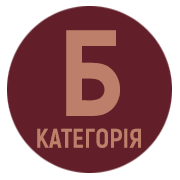МЕТОДИ ПЕРЕКЛАДУ ПІД ЧАС ВІДТВОРЕННЯ РОЗМОВНОЇ ЛЕКСИКИ ГЕРОЇВ АНГЛОМОВНИХ КІНОФІЛЬМІВ: ФУНКЦІОНУВАННЯ ТА ОСОБЛИВОСТІ
DOI:
https://doi.org/10.24919/2522-4565.2021.45.12Ключові слова:
розмовне мовлення, мовна структура, кінопереклад, кіно- діалог, способи відтворення, перекладацькі трансформаціїАнотація
Кіномистецтво сьогодні є чи не найпопулярнішим видом мис- тецтва, а завдяки сучасним технічним досягненням ми маємо змогу дивитися фільми режисерів із різних країн. Тому проблема перекладу кінофільмів є завжди актуальною, адже кінопродукція, яка надходить до нашої країни, повинна отримати свого глядача. Оскільки більшість імпортних фільмів в українському кінопрокаті становить голлівудська продукція, їх переклад здійснюють пере- важно з англійської мови. У нашому дослідженні розглянуто особливості мов- но-структурної реалізації розмовного мовлення в англомовних кінострічках. Досліджено способи і засоби передавання елементів розмовного компонента в українському перекладі у фільмах «Джуманджі 2. Новий рівень» та «Дедпул 2». Розглянуто питання наявності українського відповідника англійській розмовній одиниці та адекватності її перекладу. Визначено лінгвістичний чинник, який впливає на межі перекладу, а саме: відмінність систем національних мов, що призводить до певних відмінностей між перекладеним текстом та оригіналом. Визначено вісім видів методу перекладу, а саме: дослівний, буквальний точний, семантичний, переклад-адаптація, комунікативний, вільний, ідіома- тичний. Досліджено класифікацію методів перекладу та визначено їхні риси та особливості. Здійснено статистичний аналіз та виявлено методи перекладу, якими найчастіше користується українська студія кінодубляжу. За результатами проведеного аналізу визначено, що під час перекладу розмовної лексики у фільмах перекладач намагався використати вільний, адап- таційний та ідіоматичний методи. Установлено, що стилістична обробка й адаптація кінотексту мають відбуватися з урахуванням реалій та традицій країни, мовою якою здійс- нено переклад. Визначено, що вид перекладу цілком залежить від технічних та фінансових можливостей як замовника, так і бюро перекладу, однак най- більш прийнятним для глядача вважається дублювання. При цьому перспек- тиву дослідження становить вивчення операційних навичок субтитрування, дубляжу та синхронного закадрового перекладу.
Посилання
Алексеева И.С. Введение в переводоведение ; Филологический факультет СПбГУ. Москва : Академия, 2004. 352 с.
Голованова Я.В. Соотношение периферийных явлений в англоязычных художественных текстах и их переводах на русский язык : дис. … канд. филол. наук : 10.02.04 «Германские языки». 2012. 194 с.
Карабан В.І. Переклад з української мови на англійську мову. Вінниця : Нова книга, 2003. 608 с.
Комиссаров В.Н. Теория перевода (лингвистические аспекты) Москва : Высш. школа, 1990. 253 с.
Кухаренко В.А. Інтерпретація тексту. Вінниця : Нова книга, 2004. 272 с.
Baker М. In other words : A coursebook in translation. London : Routledge, 1992. 302 p.
Berezowski L. Dialect in Translation. Wroclaw : Wydaw. Uniw. Wroclawskiego, 1997. 152 p.
Catford, J.C. A linguistic theory of translation. London: Oxford University Press. 1965. 110 p.
Hatim B., & Munday J. Translation an advanced resource book. New York : Routledge. 2004. 394 p.
Newmark P.A. Textbook of translation. London : Prentice Hall. 1988. 311 p.



